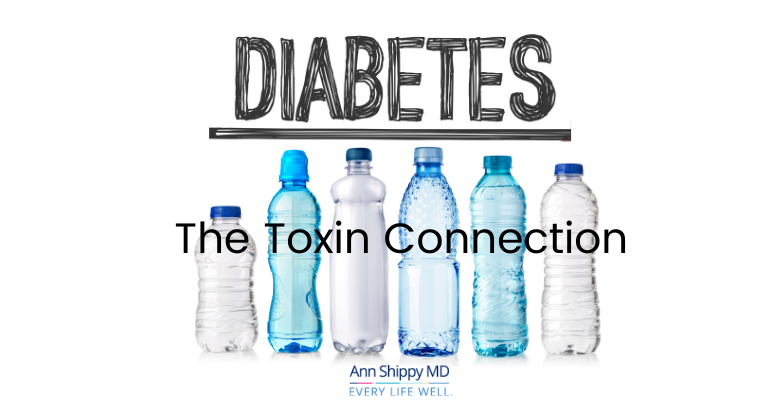It’s not only starches, processed foods, and sugary beverages that can cause diabetes…There’s a growing body of evidence that’s showing endocrine-disrupting chemicals (EDCs) are also linked to diabetes. EDCs interrupt normal hormone production and function. Exposure to these toxins costs Americans billions of dollars annually in addition to a lifetime of health problems. In the last 50 years researchers have been exploring the relationship between exposure to toxic chemicals and the onset of type II diabetes.
According to this executive summary issued by the Endocrine Society “emerging evidence ties endocrine-disrupting chemical exposure to two of the biggest public health threats facing society — diabetes and obesity.” EDCs contribute to health problems by mimicking, blocking or otherwise interfering with the body’s natural hormones. By hijacking the body’s chemical messengers, EDCs can alter the way cells develop and grow.
Over a decade ago, a study found that exposure to persistent organic pollutants (POPs) promote an environment ideal for diabetes. The study published in the journal Reviews on Environmental Health showed that “diabetes can be caused by exposure to persistent POPs, exudates from common plastics, air pollution, primary and secondary tobacco smoke, and some pharmaceuticals.” The study explained that these toxicants have one thing in common: they are all lipophilic species. Lipophilic species are chemicals that “dissolve into fats, oils, lipids and other solvents. They permeate lipophilic body membranes, thereby promoting the absorption of toxic hydrophilic species that would otherwise not penetrate lipophilic membranes.” These chemicals are easily fed into our endocrine systems.
Another study published by The American Diabetes Association also found “a possible relationship” between arsenic and dioxin exposure increasing the risk for developing diabetes.
Dr. Robert Sargis is an endocrinologist with the University of Chicago. In a profile about his research on diabetes and toxins in Science Life, Sargis talked about the potency of EDCs:
EDCs disrupt the glucocorticoid signaling pathway, a process that regulates genes controlling development, metabolism and immune response, all key factors in the development of diabetes. So far, four chemicals clearly cause trouble: bisphenol A (BPA) and dicyclohexyl phthalate, which are found in plastics, and two pesticides, endrin and tolylfluanid.
At this point almost every person on Earth has been exposed to EDCs. There are steps we can take to reduce our exposure. If you’re concerned about lowering your exposure begin eliminating toxins from your kitchen. Start with foods—buy local, seasonal, pesticide-free food. Eliminate processed foods and sugary beverages. Consider going through your home one room at a time and see where you can reduce exposure.
SOURCES:
https://www.sciencedaily.com/releases/2015/09/150928124400.htm
https://www.ncbi.nlm.nih.gov/pubmed/16801591 https://www.ncbi.nlm.nih.gov/pubmed/23509204













